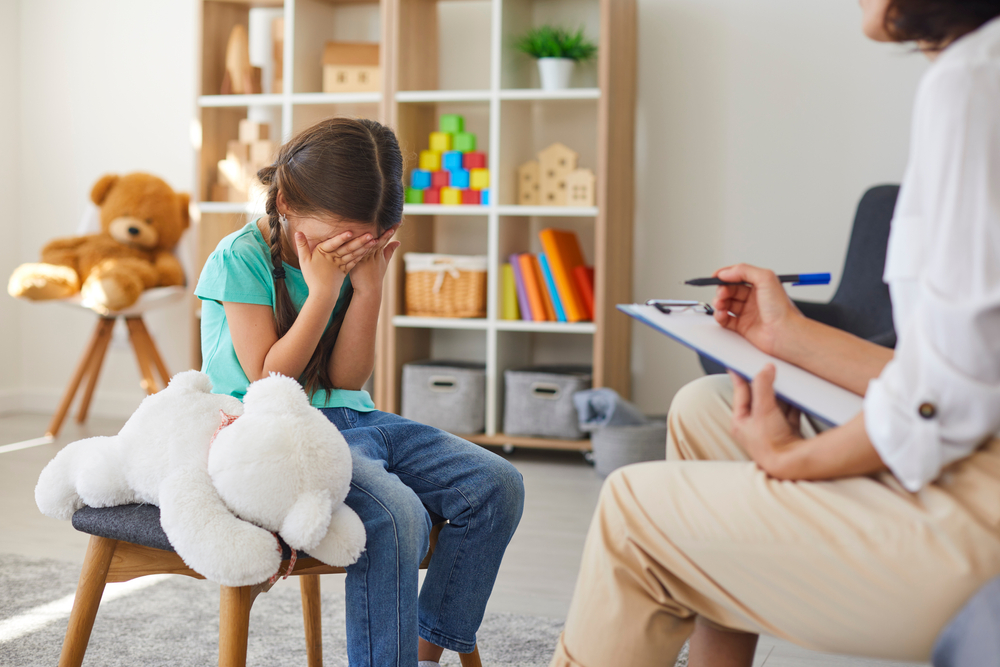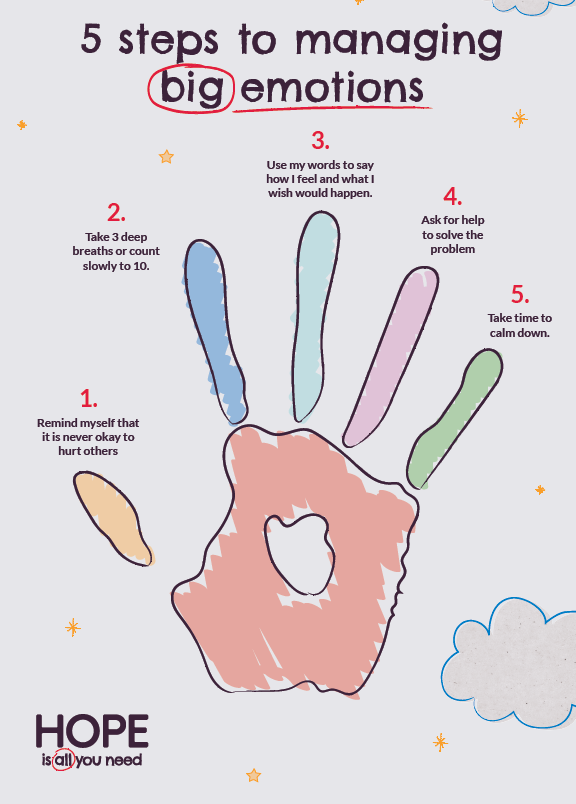5 steps to managing big emotions
It’s stress awareness month, and a huge topic is how children can manage their emotions. Managing big emotions when you’re an adult, let alone a child can be difficult. What’s even more difficult is managing the big emotions in life. Being prepared with a strategy for helping children work through big or overwhelming emotions like anger, frustration, jealousy, or embarrassment is one way to help both you and them to work through those emotions more effectively. Young children don’t have the words to describe what they want, or to explain how they feel. The sheer frustration of this can make them vulnerable to being barrelled by the big feelings that can overwhelm any of us from time to time.
It is not about teaching pupils that their emotions are not important or valid, or that they must be hidden or suppressed, but about assisting them in finding socially acceptable ways to express and deal with their emotions – most importantly, in ways that do not harm others.
Here at Hope, we have broken it down into 5 steps to managing these big emotions. Not every child will benefit from these steps; they are all different and will manage their emotions in different ways. So, use these steps as a guide to help your pupils best manage their emotions. Plus, there’s a free downloadable poster below to help remind your class the 5 steps to help manage their emotions.
Remind them that hurting others is not okay
Establishing clear guidelines for what is and is not acceptable is important. In your school, you are not allowed to hurt or be destructive to others or their property. This includes inflicting harm on others through words.
Take deep breaths or count to 10
A key component of managing big emotions is teaching your class that these strong emotions are completely normal but that it’s how they act on them that can hurt other people (and ultimately us). A child can recognise their body’s warning signs, such as a tense body, clenched teeth, or a racing heart, by taking a few deep breaths or slowly counting to ten. When coming up with a plan, talk to your pupil about how their body reacts when they are angry or frustrated. Then, suggest that they take a few deep breaths to gather themselves and consider a better course of action before taking it out on someone else.
Using words to express how they feel
Saying what they wish would happen helps to start a problem-solving conversation by acknowledging that these wishes are genuine and important. Of course, what they want won’t always be an acceptable outcome for all parties, and this can frequently be a challenging lesson for kids to learn (and practically impossible for very young kids to learn). They will often require support to develop a more peaceful solution, especially if they are accustomed to striking out when they feel strong emotions.
A great way to encourage children to use their words to express their feelings is by providing a visual representation to go along with their words. This can be as simple as our bag of buddies and bag of buddies 2 to show various emotions from happy and sad to excited and scared.

It’s okay to ask for help
Children sometimes need support as they learn to problem-solve and find solutions in social situations. Keep these crucial lines of communication open and teach your class that it is acceptable to ask for assistance when they don’t feel they can find a solution. Therefore, one day when they are dealing with issues much more serious than a quarrel or frustration with a friend, they will know they can always turn to you for assistance. In school, teachers are the people that children look up to and look for advice from. Be open and honest with them and we’ll be sure they’ll feel comfortable and safe to be open and honest with you.
Take time to calm down
Let your pupils know that sometimes they just won’t feel that the solution suggested is enough and that they may still feel angry or upset even having worked through each of the above steps. Be sure to tell them that in these situations it is often better to walk away or to find another safe way to diffuse those feelings. As their teacher, it is important to remember that this step is not about isolating the child but about giving them space if they want it, or going to them and supporting them through this final step if they need it.
Use our calming coins to further help children understand how to calm down. They can use these coins during the time they take out to calm down. Each coin has different strategies on them that pupils can do to try and be calm. These strategies are advice such as ‘talk to someone’ or ‘close your eyes and relax your body’. It may take a couple of coins for some pupils before they find an effective way to calm down however, they can learn from this and know what they need to do next time.
Free downloadable emotional literacy poster
Download our free emotional literacy poster. Pin it up in the classroom as a reminder to pupils on how to deal with their emotions and what to do when overwhelmed. Our poster can even help pupils understand each other’s emotions and be there for others when needed. They can socialise with one another and help an overwhelmed child take the right steps to managing big emotions.
Download here and print some extra copies out for each pupil or each table, too so no one misses the visual representation.
Use these 5 steps to managing big emotions to aid children in understanding their emotions and how to deal with them. Download our poster to give your pupils a visual representation too. Thoroughly go through what children need to do and how to detect different emotions with your class. Create a safe space for them to escape to when needed where they can confide in you. Provide resources that children can easily access as well for when their emotions are overpowering and they can’t focus on their work.
To further assist your pupils with their emotions, check out our ‘signs of stress’ blog to understand what to look out for and how to combat stress within children.
